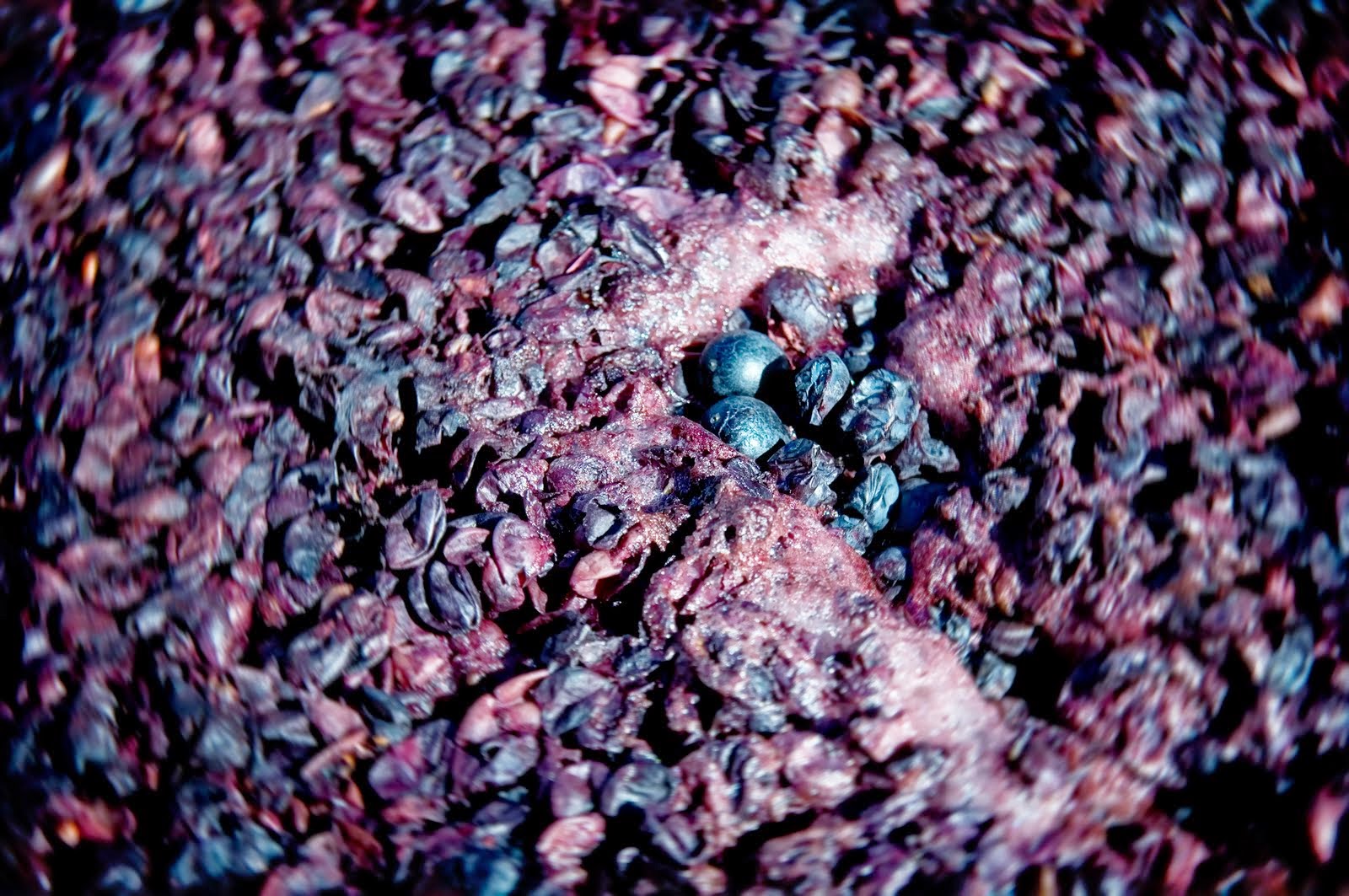The grapes came in wooden boxes of about 40lbs. each. Box by box they would be run through a crusher/destemmer.
 |
| Modern crusher/destemmer |
 |
| Fermenting Grapes |
The natural yeast in the grapes was what fermented the mash. If you got bad yeast on the grapes, you got a bad batch of wine. For the most part, it worked well. However, if you have ever tried someone's homemade wine, you may have been less than excited with the wine. It was usually bad yeast that resulted in a sour wine.
The grapes stayed fermenting for usually a week with the skins being "punched down" into the juice several times per day.
Once the "must" was completely fermented, it was placed in batches into the "torchio" or wine press and the juice was squeezed and separated from the skins.
The skins, once pressed, would be placed into a container to be used to make a different drink called "aquata". This was a peasants drink and was made by adding water to the skins and letting it sit over night. The skins were re-pressed the following day which resulted in a much less potent "wine" that had a short shelf life. In the old country, the real wine was sold and the peasants drank the "aquata" also referred to as "aquarello".
My father made this several times, usually when last years batch had run out and he could drink the aquata until the new batch was ready.
The original juice pressed from the skins is essentially the wine, however there are some remnants of the skins that are still part of this juice along with the yeast. The clarification process was accomplished by a series of rackings. Racking draws the clean wine from one vessel(usually barrels) to another clean vessel leaving the crud at the bottom of the first vessel.
 | ||
| Racking of wine, full carboy pre-racking(left), carboy mid-racking(right), crud(light purple) |
Once the wine has been racked three times, usually 1 week, 1 month, 3 months the wine is completely clarified. Based on that schedule, the wine would be drinkable by the January-February time frame of the following year.


No comments:
Post a Comment